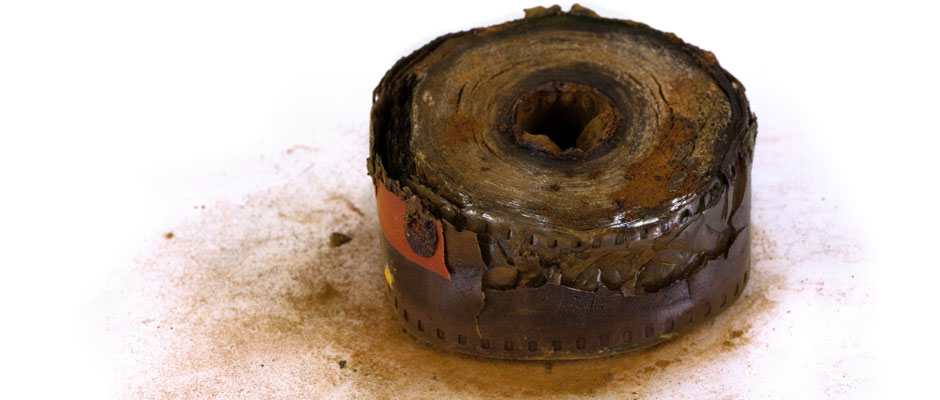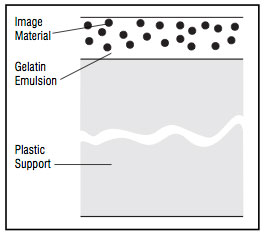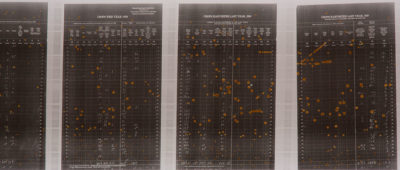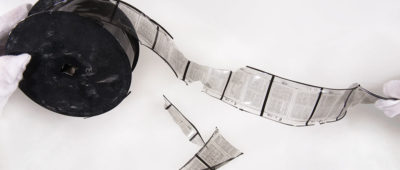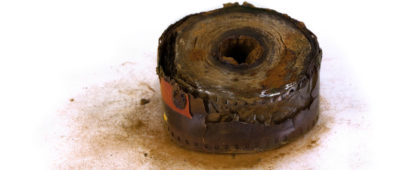Are you asking yourself “is my microfilm deteriorating?” If your answer is “yes” then you’ve found your starting place to:
- determine if your microfilm and microfiche records are in fact in the process of decay.
- understand how you can protect your records and begin the preservation of your collections.
- mitigate the risk of deterioration with proper records management.
If you’re not asking yourself about the condition of your microfilm and microfiche collections, that’s okay, too. The good news is that because you’re reading about the preservation of microfilmed records before they start to deteriorate, you’re ahead of the game and will be in a better position to know what to do when the time comes.
How Can I Tell If My Microfilm Is Deteriorating?
The unfortunate thing about this question is that by the time you find out your film and fiche collections are deteriorating, they’re already going bad! We don’t have a solution for you like the “Best By” date you’d find on a gallon of milk (although even those can be suspect). There are some general guidelines about the lifetime range for microfilm (100 to 500 years depending on the type of film), so that’s a place to start, but once you get into the specifics about how you organize and maintain your microfilm storage facilities (temperature and humidity, for instance) and the way in which your staff or your patrons handle the film and fiche, how long your archives last will start to fluctuate.
That in mind, we’re providing you a handful of ways in which to tell if your microfilm is starting to go bad so that you can catch the issue as early as possible and either staunch the decay or find a solution to preserve your content before it’s permanently destroyed.
Top 3 Signs That Your Microfilm Is Going Bad And What To Do About It
My Microfilm Smells Like Vinegar
My Microfilm Has Orange Spots On It
My Microfilm Is Flaking And Falling Apart
What Can I Do To Prevent Microfilm Deterioration?
The key method to protect your microfilm against most causes of degradation and deterioration is proper microfilm storage. This includes maintaining a temperature that doesn’t exceed 70°F with a relative humidity that should be less than 50%. To ensure the longevity of your microfilmed records, they should be stored in a stable environment that’s as cold and dry as possible.
In addition to temperature and humidity, you should protect your materials from light and pollutants; when not in use, limit light exposure and handling. If you’re cleaning or painting the area that your records are located in (just as an example), make sure that the film is well protected or, even better, moved out of the area until the activity is complete. Kodak (they know film) even says that if painting, just get the microfilm out of the room and wait three months to allow the paint to dry before returning your microfilm and microfiche to the storage room.
Below is a summarized version of Kodak’s “10 Ways to Maintain Your Microfilm Records:”
- Pack your microfilm tightly to prevent oxidation.
- Store in a temperature-controlled environment. Temperature should not exceed 21°C (70°F).
- Control moisture and keep humidity below 50%.
- Store your records in a dark place and limit exposure to light.
- Keep your storage facility clean.
- Don’t paint rooms without removing your microfilm first. Allow three months for paint to dry before replacing film in storage.
- Don’t store your microfilm in wooden cabinets for the long-term.
- Handle your microfilm carefully, and use gloves as much as is logical to reduce oil residue transferring from your hands to the film.
- Place acid-detection strips (A-D strips) next to your microfilm to catch increases in acetic acid as soon as possible.
- If film shows signs of degradation, determine which form of decay is happening and separate and quarantine film that is affected. This will help mitigate the possibility of other records contracting the issue.
What Can I Do Now?
To check on your microfilm, follow the steps below:
- Go to where your records are stored and take a few minutes and check through some of your microfilm. Grab some reels of microfilm, take them out of their boxes (the cardboard boxes; if you have the ones in the plastic cartridges leave those in the containers unless you want to spend a while trying to put them back), and give them a sniff to check for any vinegar or sour smells. Pull a couple of feet of the roll out to expose the part of the film that has some images on it and check the flexibility of the material. Is it flexible or somewhat brittle? Inspect the microfilm for visual signs of degradation, such as goopiness, mold, or flakes of the film coming off.
- If you have sheets of microfiche, go to your storage facility (even if it’s a closet in your office!) and pull out a few sheets from different locations. Smell the fiche to check for vinegar syndrome then inspect how they look (clean and clear? Moldy? Orange spots all over them). Test the flexibility of the sheets to see if they’re becoming brittle.
Next Steps
Reach out to us today! Click the “Get Your Quote” button below, fill out the form, and we’ll quickly reply to you to discuss your project.
Further Reading
If you think that a digital scanning project is the best way for you to preserve your microfilm and microfiche records from permanent loss, you may want to take a few minutes to look through some of our other articles. Here are some recommendations:
“How Much Does Microfilm Scanning Cost?” describes the 9 factors that affect your scanning price. This is a great place to start to get a ballpark idea of what you might pay if you decide to digitally convert your microfilm collection.
“The BMI Microfilm Scanning Process” is our 10-step method to track, test, and scan your microfilm records. If you send your microfilm to us, this is what it’ll experience.
“Why Should I Hire A Scanning ‘Expert?’” reviews the logistics of a digital scanning project so that you have the knowledge to make a decision to either scan your microfilm yourself or work with a company like us.

